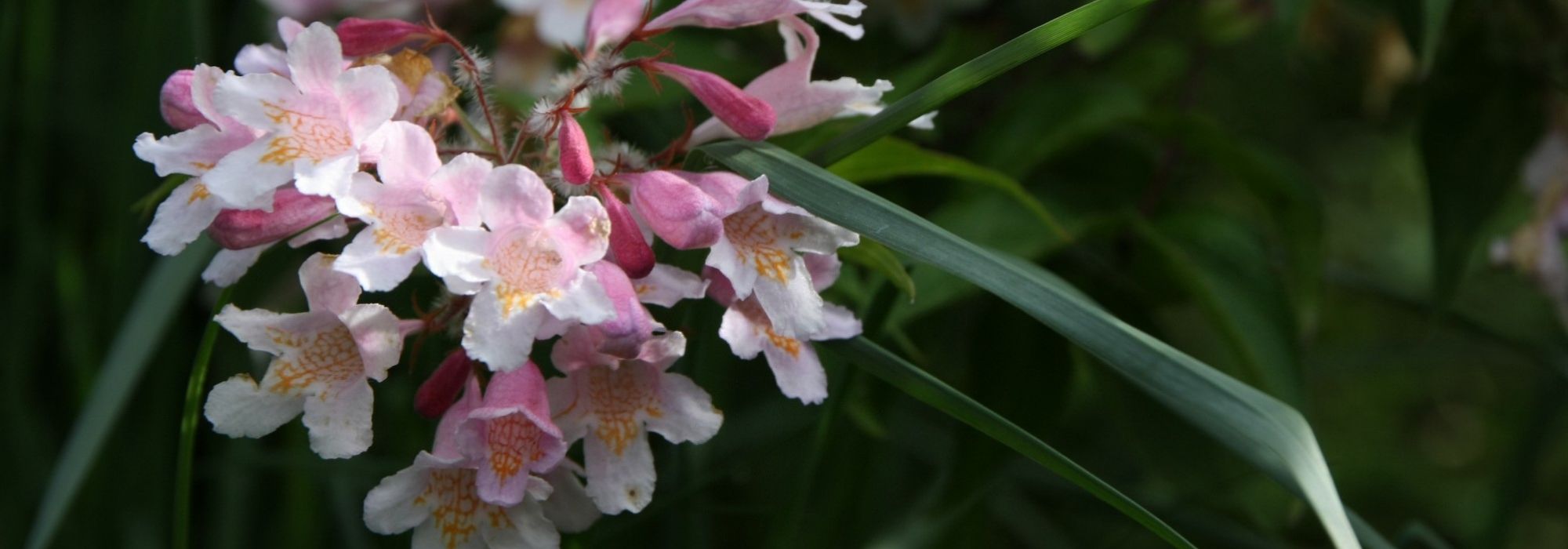
Kolkwitzia : planting, pruning and care
Contents
Kolkwitzia, in a nutshell
- Kolkwitzia is a vigorous, low-maintenance flowering bush that produces a profusion of light pink trumpet-shaped flowers in May-June.
- Deciduous, it has a graceful silhouette with small villous light green leaves on long upright branches that become trailing at the tips, featuring cracked brown and beige bark.
- It thrives in all climates, is drought-resistant, and is well-suited to any garden!
- It is the easy-to-grow floriferous bush that will enhance any romantic garden.
A word from our expert
As vigorous as it is elegant, Kolkwitzia is an Asian bush that truly deserves its name of “beauty bush”! Its graceful silhouette and generous flowering are stunning both as a standalone plant and in a free-standing hedge or border, paired with the spring blooms of weigela, lilac, or mock orange.
Its long, arching branches are covered with a cloud of flowers that are both dense and light, spreading over nearly three weeks between May and June. The flowering presents a very romantic picture with these garlands of small flowers showcasing their pale pink throat tinged with canary yellow, supported by a calyx and purple stems. The flower buds also stand out with their candy pink tones. Although the foliage emerges before the flowers, it is completely overshadowed by the abundance of flower crowns, positioned at the tips of secondary branches.
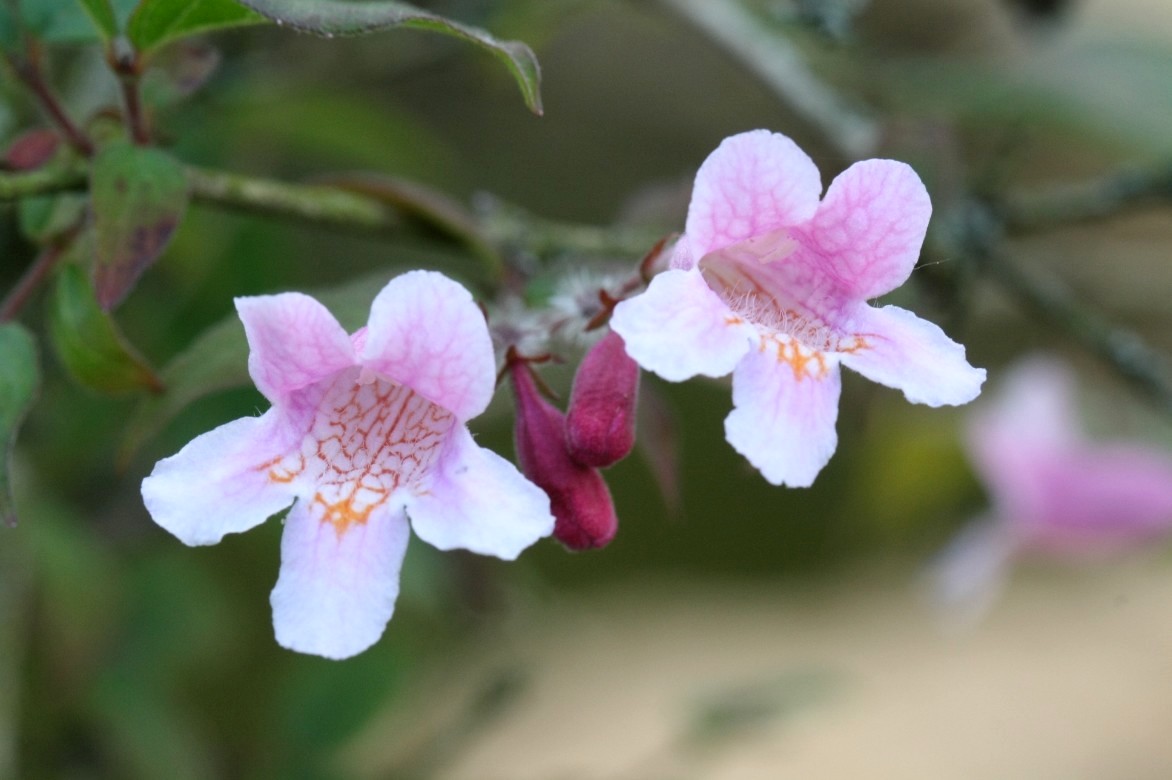
In addition to its ornamental qualities, Kolkwitzia amabilis is very hardy (down to -30°C) and melliferous, adapting well to all well-drained garden soils, including calcareous ones. The bush tolerates full sun but prefers light shade in the south. Once well established, its drought resistance is very satisfactory. Its only requirement is to be placed out of the prevailing winds that can damage its flowering.
Given all these virtues, it is surprising to see that this bush is so little known in our gardens!
Description and Botany
Botanical data
- Latin name Kolkwitzia
- Family Caprifoliaceae
- Common name Beauty bush
- Flowering between May and July
- Height between 2 and 3 m
- Sun exposure sun or partial shade
- Soil type any soil including calcareous
- Hardiness Excellent (-30 °C)
The Kolkwitzia amabilis is the only species in the genus. This deciduous bush native to central and northern China (Shaanxi and Hubei provinces) belongs to the Caprifoliaceae family, just like Weigela, Abelia, and honeysuckles. It grows in mountainous areas at the forest edge and is very hardy down to -25°C.
Its initial silhouette is quite disorderly with stems of varying lengths that rise, others that spread, and as it matures, the shape refines: a bundle of stems rises to 2-3 m in height and gracefully arches under the weight of the flowers. The bush has a slight tendency to sucker, which is an advantage for multiplying or thickening a hedge. It benefits from rapid growth, allowing it to reach 3 m in all directions within 4 to 6 years, sometimes up to 5 m depending on growing conditions.
Its small, pointed, dark green leaves are opposite and measure 2 to 3.5 cm long. They are identifiable by their velvety lamina marked with prominent veins. They sometimes take on a lovely purple and golden hue in autumn. The cultivar Maradco, sometimes incorrectly referred to as ‘Aurea’, produces soft ochre-yellow foliage that brightens the scene throughout the season. Older stems display beautiful cream-coloured bark that exfoliates in contorted strips, while younger stems have a reddish-brown hue.
Flowering occurs shortly after leafing out. The flowers, 1 to 2 cm in diameter, supported by a velvety reddish calyx, have a trumpet shape with 5 lobes and a white throat beautifully speckled with orange-yellow, forming a lovely contrast with their very pale pink to darker pink hue. In the cultivar ‘Rosea’, the pink colour is more pronounced than in ‘Pink Cloud’, which is more commonly encountered. The slightly campanulate flowers are grouped in pairs, and the peduncles gather to form a corymb of 5-7 cm at the tips of the axillary branches arranged in fishbone patterns. In warm, calm weather, pleasant fragrances emanate from the flowers, attracting pollinators and butterflies for nearly three weeks.
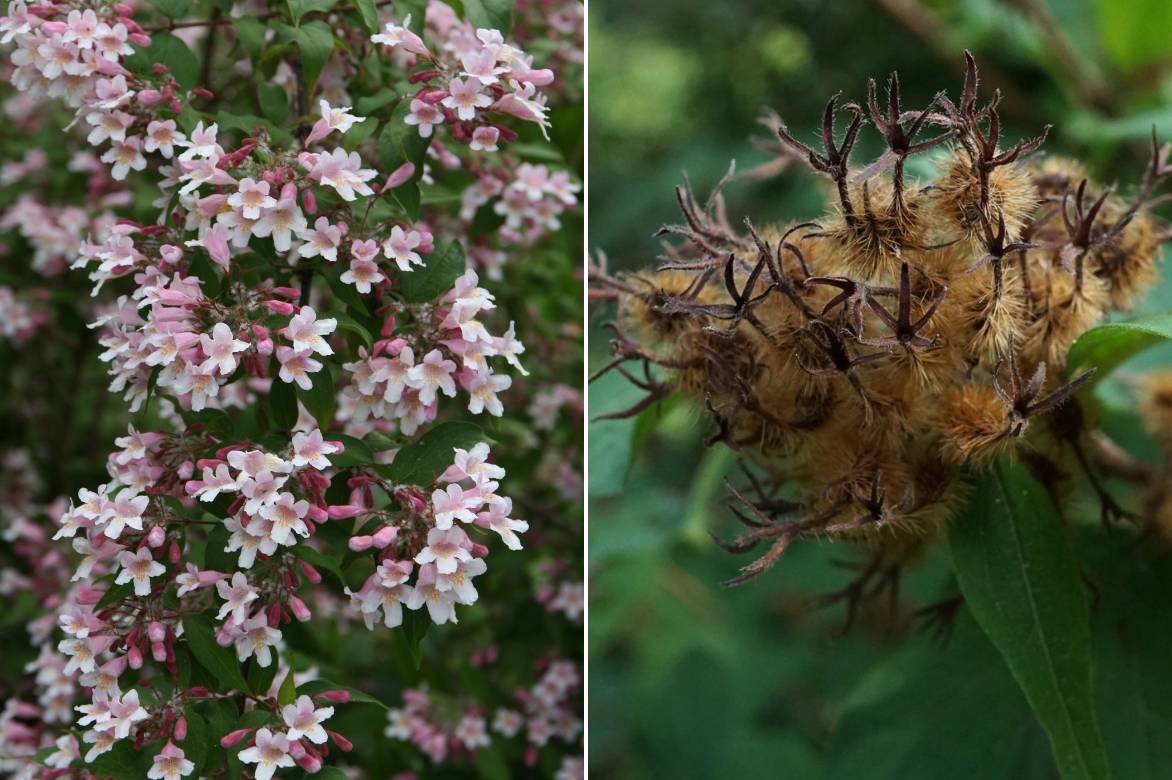
Flowers and seeds (photo Plant Image Library-Flickr) of Kolkwitzia
The fruits are small brown capsules that are slightly spiny and contain hairy seeds.
You can create delicate romantic bouquets by placing a few branches in a vase accompanied by peonies, for example.
The main varieties of Kolkwitzia
There are relatively few varieties of Kolkwitzia, which may explain its low popularity despite its many advantages.
The best varieties
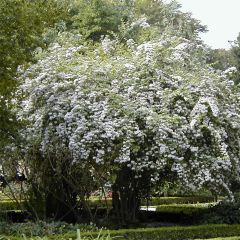
Kolkwitzia amabilis - Beauty Bush
- Flowering time June, July
- Height at maturity 3 m
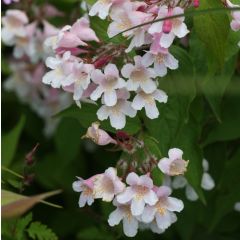
Kolkwitzia amabilis Pink Cloud - Beauty Bush
- Flowering time June, July
- Height at maturity 3 m
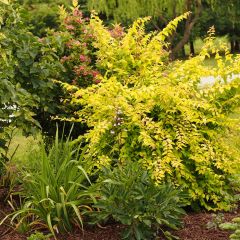
Kolkwitzia amabilis Maradco - Beauty Bush
- Flowering time May, June
- Height at maturity 2 m
Discover other Kolkwitzias
View all →Available in 1 sizes
Available in 1 sizes
Available in 2 sizes
Young plantation
Where to plant Kolkwitzia?
The Beauty Bush can be planted in full sun or partial shade. Good sunlight makes the plant more floriferous, but a slightly shaded exposure enhances the colour of the flowers and protects the golden foliage of Maradco from burning. In a Mediterranean climate, prefer a location at the edge of a thicket, while in a mountainous area, it is wiser to place it sheltered from cold drafts that can scorch young shoots.
Provide it with any type of soil from fresh to dry, even calcareous, or a deep container filled with garden soil. Growing in a pot makes it less floriferous.
When to plant?
In a container, Kolkwitzia can be planted at any time, even during flowering, provided you ensure it is watered during dry periods. Choose plants with branches full of buds, as some series are less floriferous.
How to plant?
This plant is very easy to cultivate.
- Soak the root ball in a bucket of water to thoroughly moisten it.
- Dig a hole three times wider than the root ball and loosen the soil around it with a fork.
- Add a few handfuls of sand and gravel to ensure good drainage around the roots. In heavy soil, opt for planting on a mound or within a rockery.
- Add manure or decomposed compost if the soil is sandy.
- Place the plant in the planting hole.
- Replace the soil and lightly firm it down.
- Water and mulch to maintain moisture.
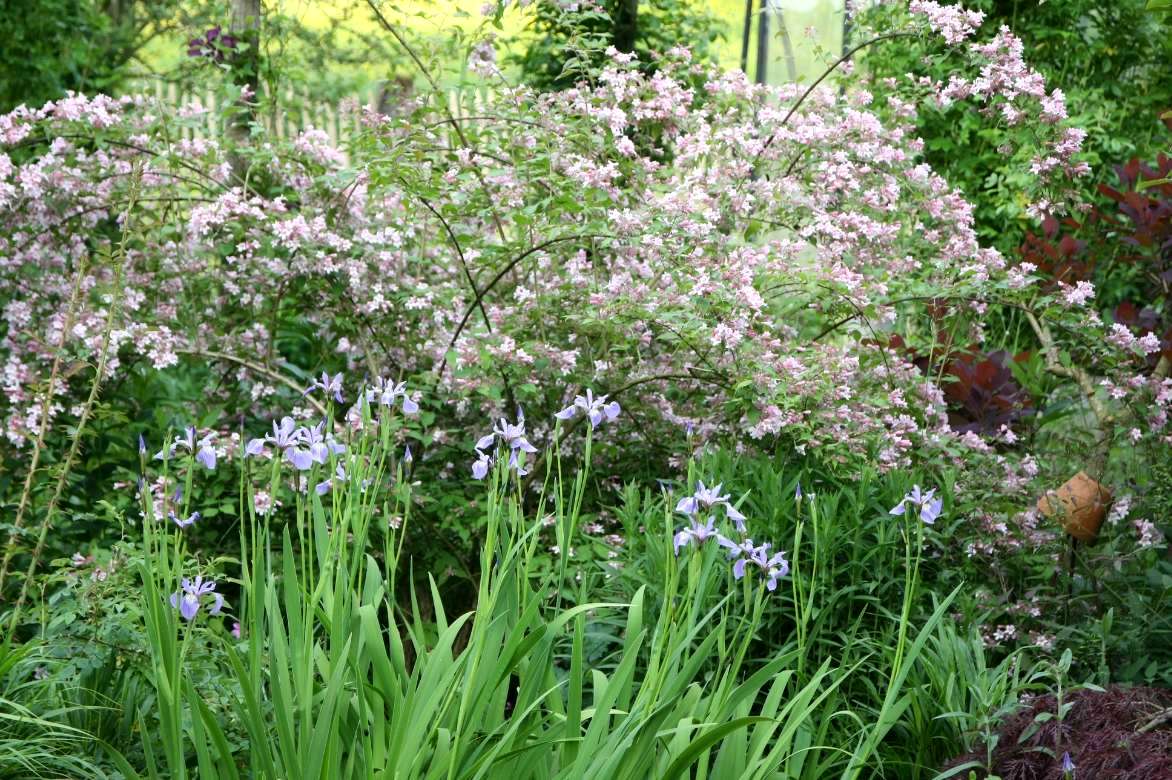
The natural elegance of Kolkwitzia amabilis ‘Pink Cloud’ looks wonderful at the back of a flowerbed (Saint Anne’s Garden, Ardennes)
Pruning and care
Water generously during the first summer to encourage the roots to establish deeply.
Pruning Kolkwitzia
Pruning is not obligatory, the flowering of Kolkwitzia does not exhaust itself; however, you can intervene at the beginning of summer (after flowering) to balance the habit and clear the branches in the centre to prevent the bush from becoming too dense.
- Remove divergent shoots and the oldest branches.
- You can also pinch all the young stems to encourage the formation of branching that will bear flowers the following spring, as flowers are borne only on wood from the previous year.
- Eliminate dead wood in autumn before leaf fall to clearly distinguish it from living wood.
Multiplication
The simplest method of propagation is to divide the clump, but Kolkwitzia can also be obtained by propagation by cuttings in July-August.
Propagation by Cuttings
Prepare a deep pot by filling it with a mixture of potting soil and sand.
- Take tips from semi-ripe shoots about 15 cm long, if possible with a heel (obtained by pulling the shoot at the point of branching).
- Remove the leaves located near the base of the cutting.
- Plant them halfway in a mixture of sand and potting soil.
- Gently firm the soil around to eliminate air pockets and ensure good contact between the potting soil and the cutting.
- In autumn, separate the rooted cuttings and plant them in buckets, keeping them under a cold frame until spring.
- Plant your plants in spring in the open ground.
→ Learn more about Kolkwitzia propagation by cuttings in our tutorial!
Uses and associations
The slender silhouette of the Beauty Bush wonderfully complements more compact and low bushes such as a purple Physocarpus, or in dry soil with a creeping Cistus salviifolius or even a Ceanothus Italian Sky. In ordinary soil, you can accompany its pale pink flowering with those of late spring shrubs such as mock orange, Snow Mound spiraea, lilac, viburnum Watanabe, Weigelia, or landscape roses like Emera, within a flowerbed or a free hedge.
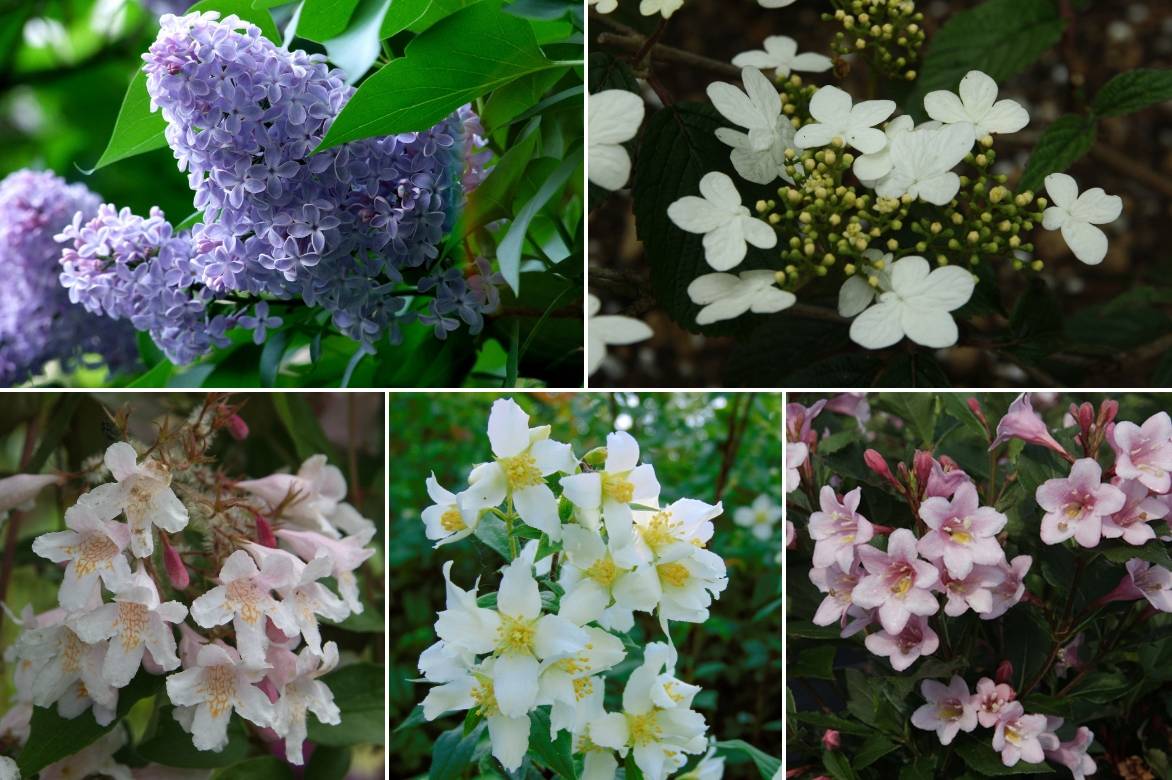
An idea for pairing: Lilac, Viburnum plicatum ‘Watanabe’, Kolkwitzia amabilis ‘Pink Cloud’, Philadelphus coronarius, Weigelia florida ‘Polka’
You can also entwine the stems of a summer-flowering viticella clematis to extend its appeal in summer.
The kolkwitzia offers a magnificent romantic tableau placed as a backdrop in front of an opulent flowerbed of perennials such as larkspur (Delphinium), peach-leaved campanulas, peonies, or garden irises.
Its upright silhouette can adorn the base of a pergola where climbing roses of a deeper pink like ‘Zéphirine Drouhin’ or be trained against a wall alongside a large-flowered pink or deep mauve clematis.
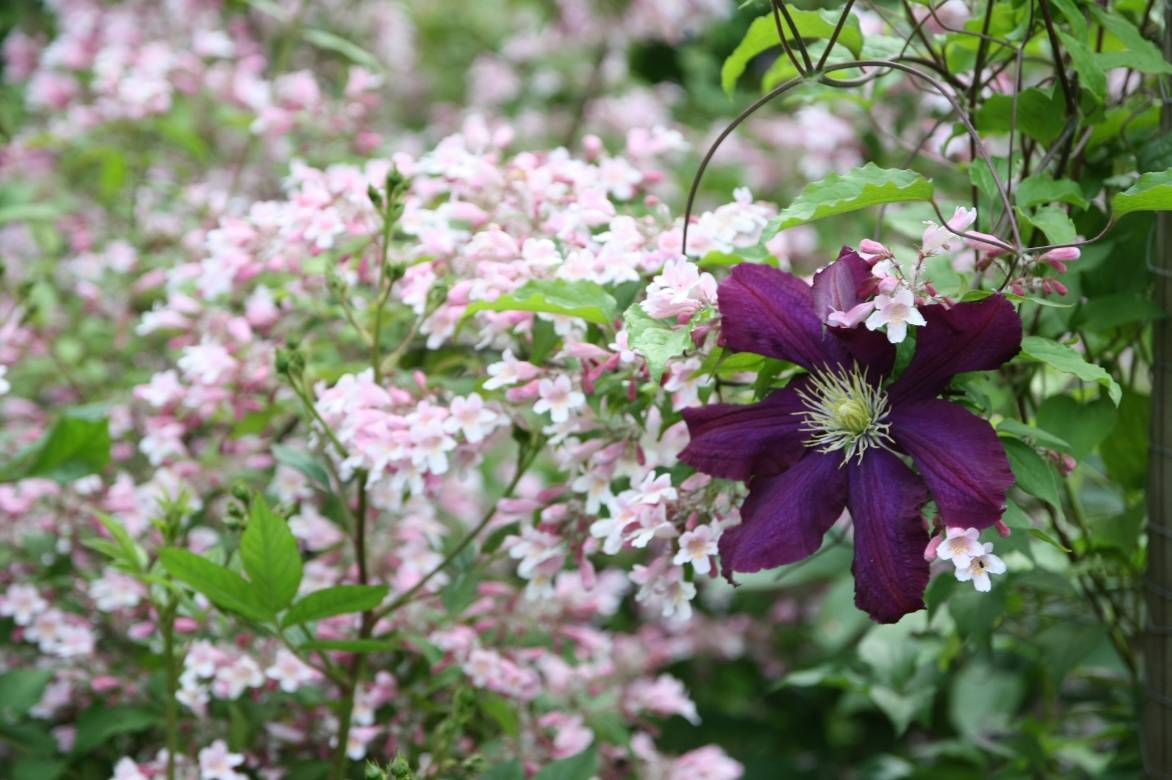
Kolkwitzia amabilis ‘Pink Cloud’ and Clematis ‘Warszawska Nike’ climbing on a pergola near the shrub (Le jardin sainte Anne, Ardennes)
A carpet of Spanish sea thrift (Armeria maritima), scented pinks (Dianthus barbatus, plumarius), and hardy geraniums are all ideas to enhance the charm of its presence.
For a scene in partial shade, pair it with a Philadelphus coronarius ‘Aureus’ with fragrant white flowers, and if the soil is acidic, with a Viburnum plicatum ‘Mariesii’ with spreading branches covered in white lace-like inflorescences.
→ Discover more pairing ideas with Kolkwitzia in our advice sheet!
To go further
Discover our range of Kolkwitzias.
- Subscribe!
- Contents
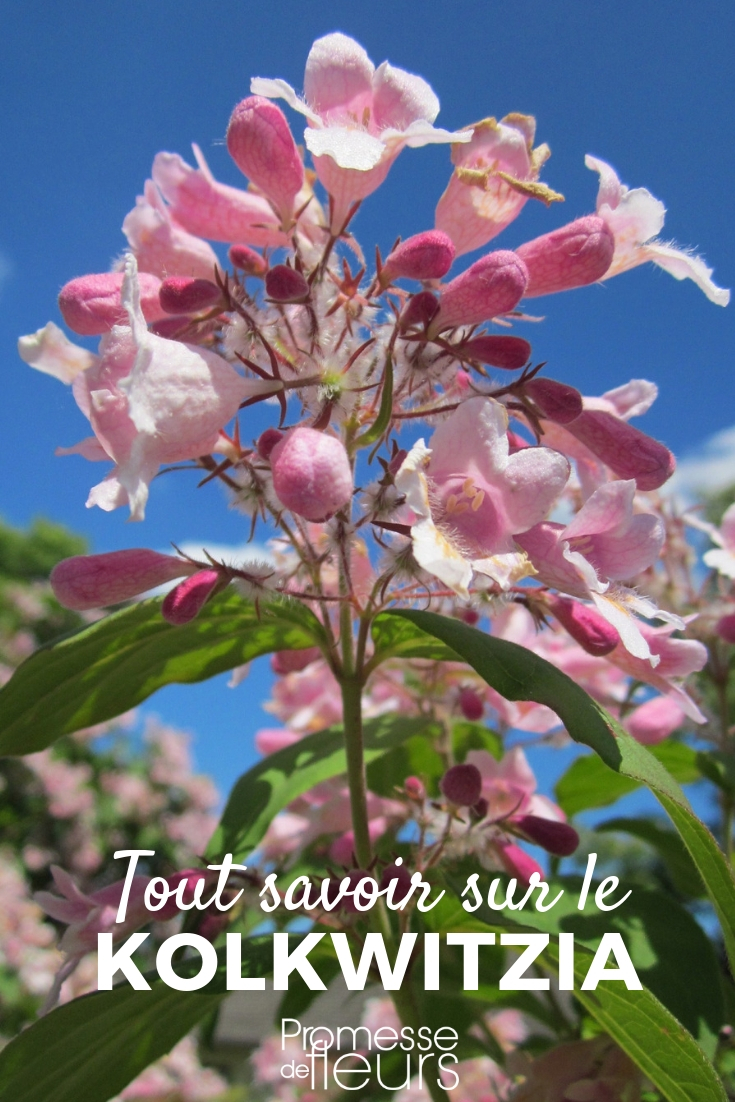


































Comments